Tiny Epic Quest is the newest game in the line of Tiny Epic games by Gamelyn Games. Each player takes control of 3 meeples in a “choose your own adventure” style board game for 1-4 players. They explore the world fighting goblins, exploring dungeons, and learning magic, all while trying to complete quests to earn items with special powers.
The game feels like a big box game but comes in a small box packed with tile cards, quest cards, movement cards, meeples, items, and a well organized instruction book. The art on the box begs the player to open it and reveal the adventures that await. The illustrator, Miguel Coimbra, and the graphic designer, Benjamin Shulman, have done a wonderful job bringing the tiles, cards, and game box to life. The bright colors and art on the cards and tiles draw the eye creating an invitation to explore and quest.
Gameplay
Set up begins by separating the 4 colored kingdom cards and then randomly placing the others. This is done by making a 3×3 square with the kingdom cards placed in the corners. After the square is made you add 2 cards to each side to make the coastline. Set up for this game is simple and the instructions make it easy to understand. As the picture shows, it’s not the typical shape seen in other games. This random tile setup makes the replay high because the events will be in different locations every game.
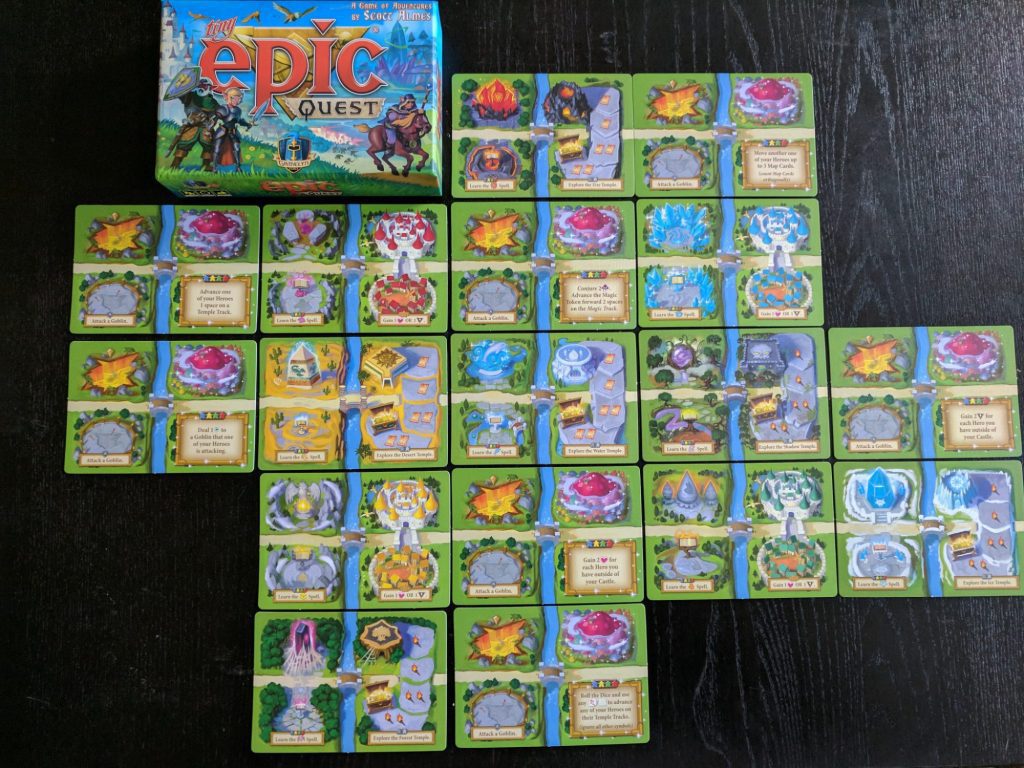
Place the meeples in the kingdom of their matching color and you’re ready to start the game. During each turn there are two phases; Day Phase and Night Phase.
The Day Phase
The Day Phase consists of Movement or Idling. Movement is performed using a drafting mechanic. The first player chooses a movement, flips that card over, then either moves one of their meeples in that manner or Idles, which allows players to rest up and possibly regain health. After the first player makes their move, each other player in order may take the same move action or Idle. Once four of the five actions cards have been exhausted the Day Phase ends.
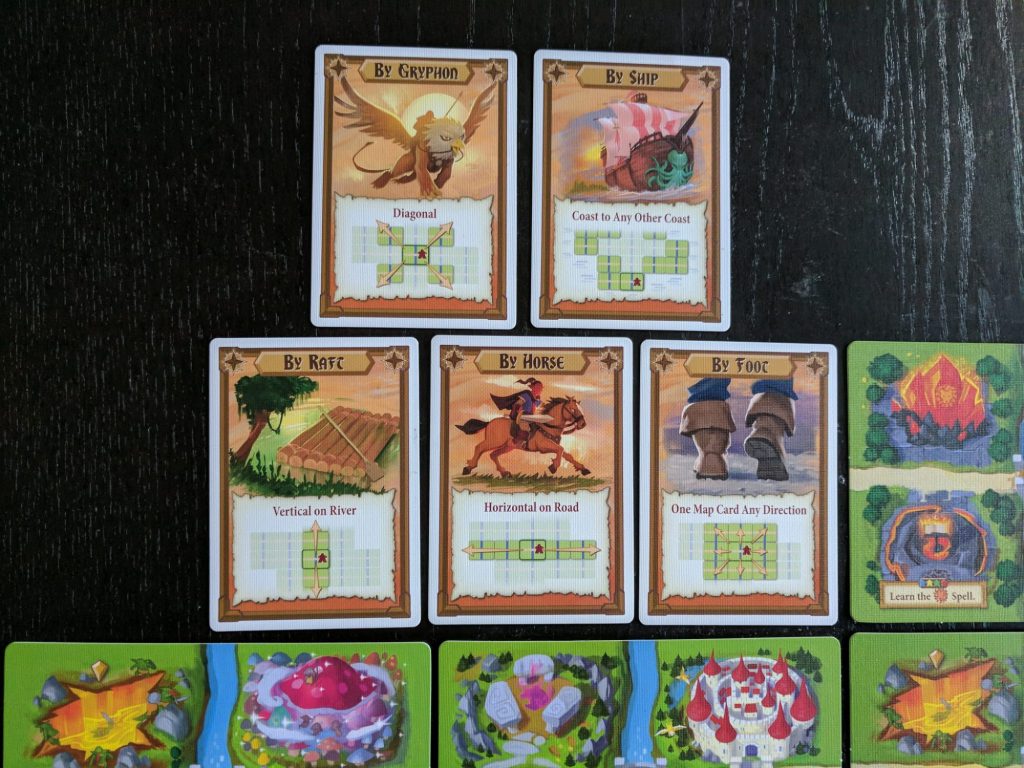
There are 3 Quest Cards available to complete during play. They may be movement quests, location quests, or temple exploration quests. A player may only complete one quest during the Day Phase. If one is not completed by someone, the oldest quest is discarded and replaced with a new quest. When a quest card is completed, the player immediately receives the quest card and flips over a new quest.
During the movement action, meeples will be able to travel to several different locations. By exploring Temples players can complete Quests and usually gain an item. Spell Obelisks allow players to try to learn the spell of that region during the night phase. Mushroom grottos grant special actions immediately; extra movement, damaging enemies, healing, etc. Goblin portals allow players to fight the goblins and raise the player’s maximum health if they win. Castles allow players to heal, recovering health and power.
The Night Phase
The Night Phase involves resting or adventuring. While adventuring, players resolve any Temples, Obelisks, or Goblin which were activated during the Day Phase. This is done through a unique dice mechanism in which every player takes turns rolling and everyone is able to use the results of every roll. For instance, if the first player rolled goblins you would count the total and then distribute them as damage equally. Do the same for power dice, mushrooms, scrolls, torches, or attacks. Players continue taking turns rolling dice until everyone has decided to rest or has become exhausted (run out of health).

After the Night Phase the movement cards are refreshed, the starting player token is passed, and a new Day Phase begins! Hopefully, meeples have been equipped with some items, players have completed some quests, and goblins have been beaten. Doing these things makes players more powerful and earns victory points at the end of the game. The game ends after 5 rounds, at which time players tally up their points, and reveal who is the best adventurer.
Thoughts
This is a fun game and requires more planning and strategy than one might think based on its size. For such a small box it carries a lot of weight, offering extremely strategic movement and placement choices, resource management, and enhancements. Placing meeples where they’re needed most to complete quests while also gaining items is a difficult juggling act. There are multiple ways to gain victory points, but they must all be evenly weighed because in some cases not completing certain conditions actually costs you points.
The push-your-luck style of rolling the dice during the Night Phase—trying to get what you need but also receiving benefits from other people–makes it so players are encouraging each other to keep rolling. This makes for some fun interaction and even team play during that phase. It’s great that when players aren’t rolling the dice they are still involved in the game.
The coolest thing about the game is that the meeples aren’t regular meeples, they are ITEMeeples (pronounced just like it looks: item-meeples). Whenever a player gains items from completed quests or exploring temples, the items go right into the hands of the meeples. This makes the game so much more aesthetically pleasing because soon there are meeples on the board with a bow and arrow and bomb, or sword and shield, or staff and boomerang. Who doesn’t like outfitting an adventurer off to complete quests?
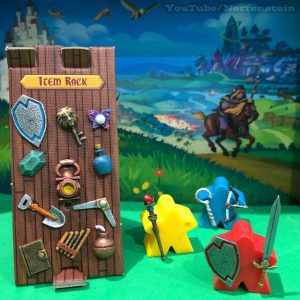
Tiny Epic Quest is an excellent game with easy to learn rules that still give the game depth. The turn mechanic is one that Gamelyn Games and designer Scott Almes is known for; in which it always feels like your turn. You’re not just waiting for other people to take all their actions before you get to do anything because you can always take the same move action as the active player. When players roll dice, you need to be paying attention because the results can harm or help you. There is almost always something to do.
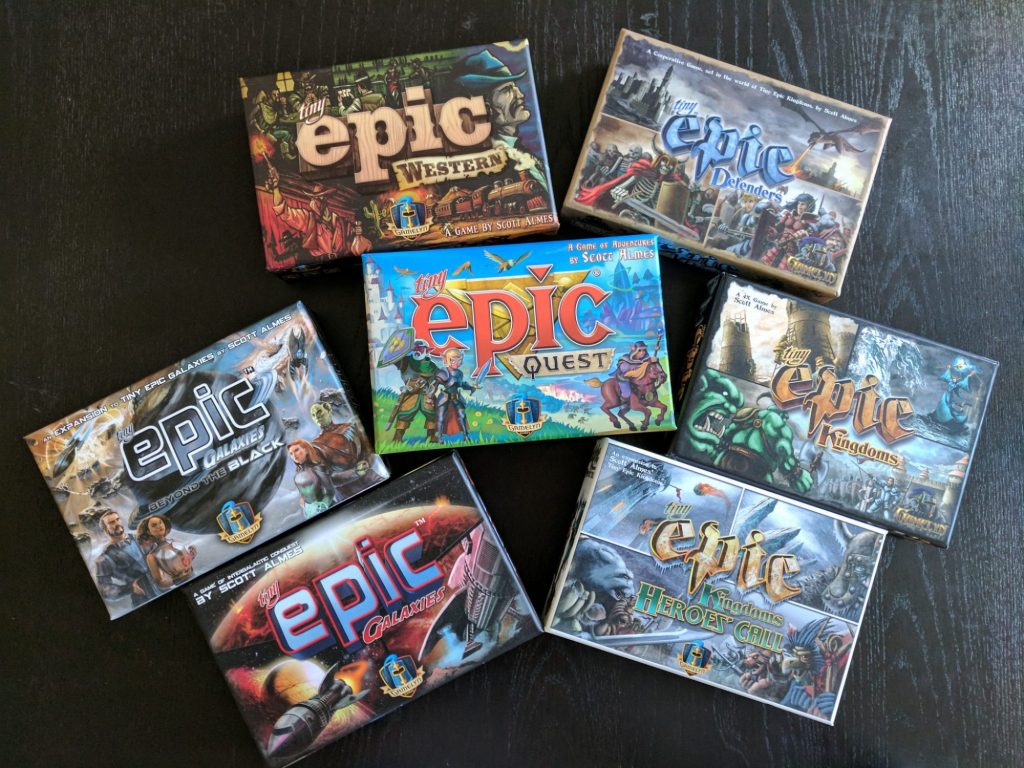
The price is extremely accessible, at . With a playtime of about an hour it’s not going to take up your afternoon but will definitely give you an action packed time of adventure and exploration. Compared to the other Tiny Epic games this feels like a bigger game, with a full tile map to explore as opposed to just a player specific card to track resources. Tiny Epic Quest still has resources to track and with the addition of ITEMeeples there’s also a unique twist on inventory. And while, ultimately, players are playing to win, the dice mechanic creates a much more cooperative feel to the game.
Be on the lookout for other great titles by Gamelyn Games. Their previous Tiny Epics include: Western, Defenders, Galaxies, and Kingdoms. There is currently a Kickstarter out for a fully revamped version of Defenders, which will include ITEMeeples, and an expansion Defenders: The Dark War, and it looks incredible.
And with the social media chirping for Zombies, Mechs, or Pirates, who knows what’s on the horizon for Gamelyn Games?


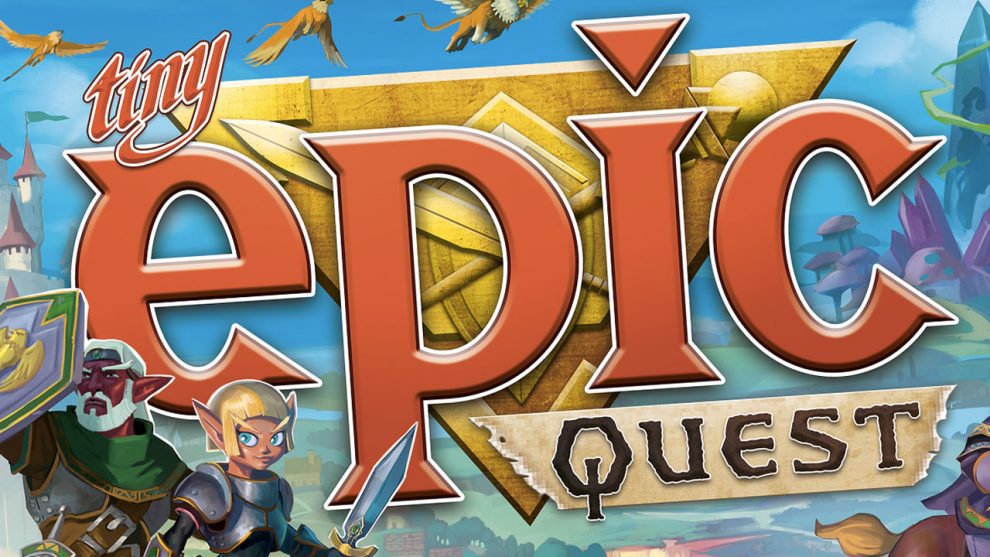

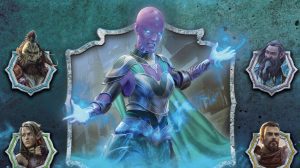

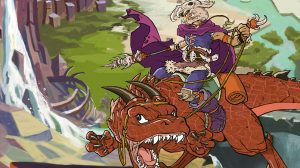
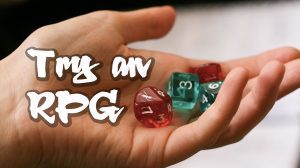




Add Comment